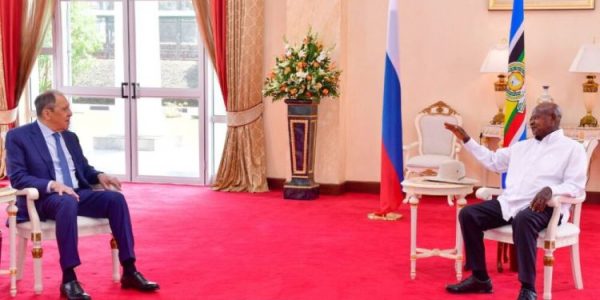Plans for the construction of the first nuclear power plant in Uganda have been stressed during Sergei Lavrov‘s visit to the East African country. Lavrov is the foreign minister of Russia who was recently touring four African countries.
Led by President Yoweri Museveni the government of Uganda sought assistance from Russia for the construction of the facility. Museveni specified that they want that power for electricity, for agriculture, and not for nuclear weapons. Uganda intends to construct a 2,000-megawatt nuclear power plant by 2032, according to President Museveni’s remarks in 2017.
With the hope that they will work at the landmark nuclear power plant once constructed, Museveni’s government has already trained 22 individuals in nuclear science to the master’s level.
Energy for Growth Hub expects that by 2030, nuclear energy will be available in Ghana, Nigeria, Sudan, Algeria, Morocco, and Tunisia. The only country in Africa with a functioning nuclear power plant is South Africa, which was scrapped after Apartheid.
The Ugandan government was given the go-ahead to commence construction on a nuclear power plant by the International Atomic Energy Agency (IAEA) in May.
Uganda’s readiness for a nuclear power plant
The Director of Nuclear Power for Africa at the IAEA, Aline Des Cloizeaux, told Museveni that the organization had made recommendations for the country of East Africa to begin construction and generating nuclear power. She stated that they had come to the conclusion in the first phase that Uganda was prepared for the facility.
The mission of the agency is to support and enable member countries to have a safe and secure plant. She stated that the agency is ready to provide all the assistance through training so that the project becomes a reality.
Below is a summary of the IAEA’s phased approach to developing nuclear power infrastructure at the national level.
It is divided into three phases:
Phase one
Understanding commitments, obligations, and resource needs prior to beginning a nuclear power project
Phase two
Comprises establishing specialized nuclear institutions and planning for construction.
Phase three
It involves managing construction and getting ready for commissioning and operation.
Reported earlier
Sep 2019
Uganda signs IGA with Russia for the development of nuclear energy

The government of Uganda has signed an Intergovernmental Agreement (IGA) with the government of Russia for the development and peaceful or non-military use of nuclear energy.
The pact was inked during the 63rd regular session of the International Atomic Energy Agency (IAEA) General Conference, at the International Atomic Energy Agency, Headquarters in Vienna, Austria.
Eng. Irene Muloni, Ugandan Minister of Energy and Mineral Development, and Nikolai Spasskiy, the Deputy Director General of ROSATOM, signed the Agreements on behalf of their governments.
The agreement seeks to establish a strong cooperative framework with a focus on the development of nuclear infrastructure in the East African country of Uganda.
Also Read: First tests of turbines at Karuma hydropower dam in Uganda completed
The Agreement
The Ugandan Minister of Energy and Mineral Development expressed gratitude towards Russia for the cooperation in this particular field and vowed that her government is committed to working together with ROSATOM in line with the Agreement to harness the positive contribution of nuclear energy to socio-economic development.
On the other hand, Spasskiy said that ROSATOM is ready and devoted to supporting Uganda’s plans to develop her nuclear power industry.
Scope of work to be accomplished
According to the agreement, the two parties will collaborate in the construction of nuclear power plants and a nuclear science and technology center in Uganda on the basis of a research reactor of Russian design. The center will be used for nuclear training, research, and development.
It will be equipped with facilities for the production and application of radioisotopes for industrial, healthcare, and agricultural use.
It will also be crucial in the support towards strengthening nuclear and radiation safety, as well as education.

